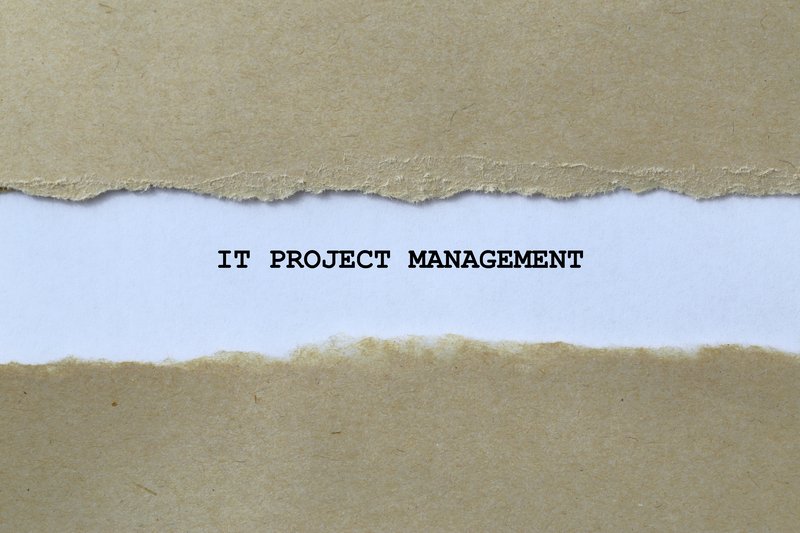
Editor’s note (July 2025): This guide was originally written for ByteStart by project management expert David Baker. We’ve lightly updated it for formatting and added a short section for small business readers in 2025. The core content remains unchanged.
All businesses change as they grow and develop, and it is likely that at some point, every business will take on a project of some sort, whether that’s delivering a new IT system, reducing wastage in the supply chain, or developing a new website.
Many business projects can be complex and protracted affairs that last months and require a lot of precious resources. An understanding of project management will, therefore, help business leaders keep things on track and avoid lengthy and costly delays.
While it falls upon the shoulders of a project manager to marshal the various individuals, expertise, and resources to deliver the project, some predefined project management methodology will always inform what they do and help them keep track of all the disparate elements.
Project management methodologies bring structure and order to proceedings, and one of the most recognised in the world today is the PRINCE2 project management methodology.
The seven principles that sit within this approach are flexible enough to be applied to projects of any size in any industry, and it’s these that we’ll examine in this short guide:
1. Continuing business justification
2. Learnings from prior projects
3. Clear roles and responsibilities
7. Tailor to your specific environment
1. Continuing business justification
All projects must be justified, not just at inception, but throughout their execution and implementation.
This might sound simple in principle, but when you consider the shifting influence of events, markets, management agendas, and evolving corporate strategy, justifying a project over the long term becomes a little more challenging.
Another perennial problem that threatens business justification is scope creep. This often results from poorly defined goals, which lead to the misallocation of resources and wildly optimistic timescales.
A steering committee must clearly define benefits and progress throughout a project’s lifecycle to ensure sustained involvement and buy-in from corporate sponsors and stakeholders.
2. Learnings from prior projects
Precedent is an important principle in project management methodology as it is a powerful aid in risk assessment.
Therefore, all project planning should begin by examining the ‘learning logs’ of previous projects. These logs will highlight potential areas of difficulty and help set realistic timescales, assess risk, and avoid the mistakes of the past.
All projects should, in turn, keep a log throughout and beyond the life of the project, creating an environment of consistent risk assessment and analysis.
3. Clear roles and responsibilities
It’s important that roles and responsibilities are clearly defined in a hierarchy from the start of the project.
Broadly speaking, these roles will fall into one of four groups: corporate level (stakeholders and senior management), project board level (often referred to as a ‘steering committee’), project manager level, and team level.
A better understanding of roles will ensure that information gets to the right people, there are no gaps or overlaps in day-to-day project work, and everyone understands who they are reporting to.
Properly defined hierarchy also creates the framework for a better utilisation of resources.
4. Manage in stages
Projects can be better understood, analysed and managed if they are broken down into clearly defined stages, which should be laid out in the planning phase. These will come together to create a sort of roadmap that gives the PM and the project steering committee a high level overview of the project’s progress and future direction of travel.
Big projects can involve very complex and protracted stages that could be seen as a project within the project. By maintaining this high level overview, the project manager (PM) can keep a handle of overall project progress and identify scope creep and slipping timelines in good time to take mitigating action.
5. Manage by exception
One of the founding principles of the PRINCE2 project methodology (and a core principle in any flexible approach to managing projects) is the idea of management by exception. This posits that interference from senior management is only necessary if the situation demands it.
If everyone on the project team knows what they are doing (see principle 3) and the project is properly planned out (see principle 4), then everyone can get on with their job without the need for regular interference and inevitable ‘micromanagement’.
This principle applies right up the chain of command from the PM to the project steering committee and corporate level stakeholders.
6. Product focus
When we talk about a ‘product’ in project management, we really mean the end result rather than the work itself. With that in mind, project management should be product-focused rather than work-focused.
Products should be clearly defined by their purpose, quality criteria, format and composition and the project should be focused on delivering the product to clearly defined quality criteria.
Focusing on the end value allows a project manager to work backward and define workflow and processes in accordance with this end goal.
7. Tailor to your specific environment
A defining feature of the PRINCE2 project management methodology is that it is malleable and not rigid in its approach. This was a recent addition to the methodology after criticism that it was too dogmatic and unwieldy.
While all projects should learn from past projects (see principle 2), each project’s unique environment must also be appreciated.
So, while previous projects can be used as a framework and benchmark, each project plan should be built around the specific requirements of that project.
PRINCE2 for small business owners in 2025
While PRINCE2 is often used in larger organisations, its principles can still help smaller businesses and even sole traders. Defining clear roles, planning in stages, and focusing on the end result are valuable habits, even for modest projects like website redesigns or client onboarding systems.
If you’re looking for more flexible or modern tools to support these ideas, lightweight platforms like Trello, ClickUp, or Asana can help apply PRINCE2-style thinking without the formality.
Further reading
- 6 PRINCE2 Foundation and Practitioner Exam Tips – Firebrand Training
This guide was written exclusively for ByteStart by David Baker. David has worked with PRINCE2 Training for many years, delivering courses such as PRINCE2, ITIL, PMP, Agile, Scrum, and Lean Six Sigma. PRINCE2 Training delivers world-class accredited training solutions to thousands of organisations and individuals worldwide.



